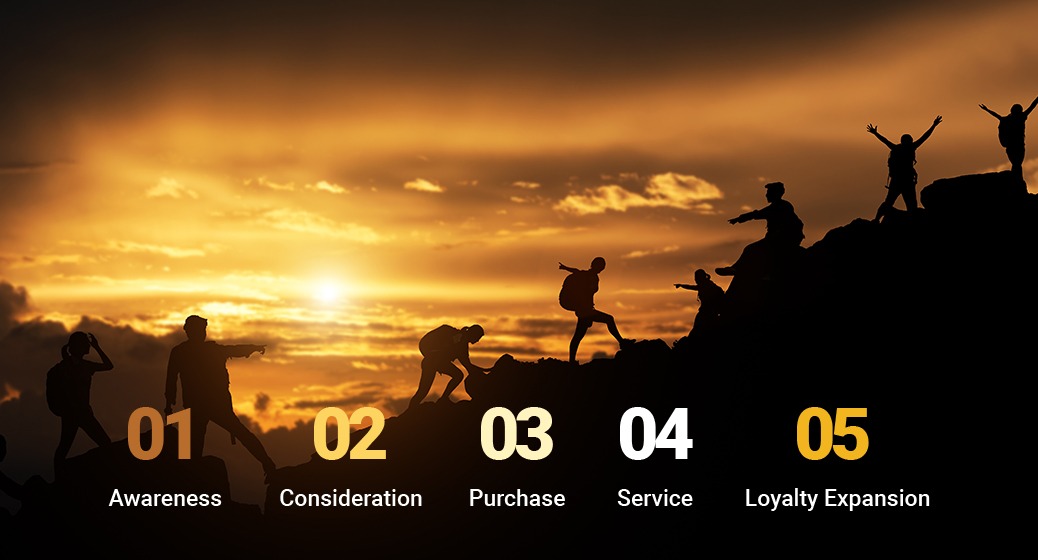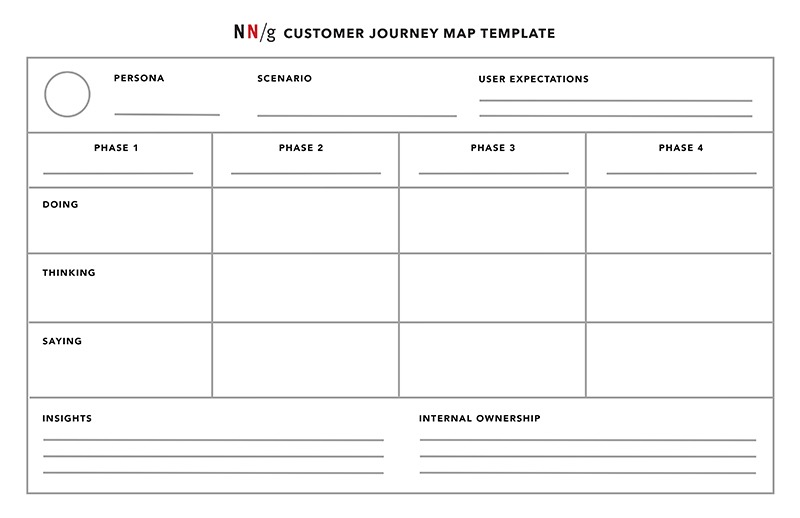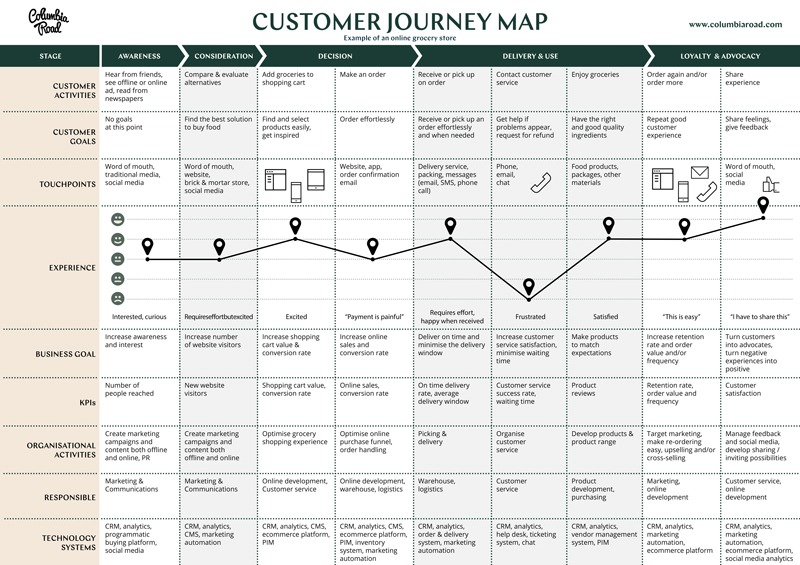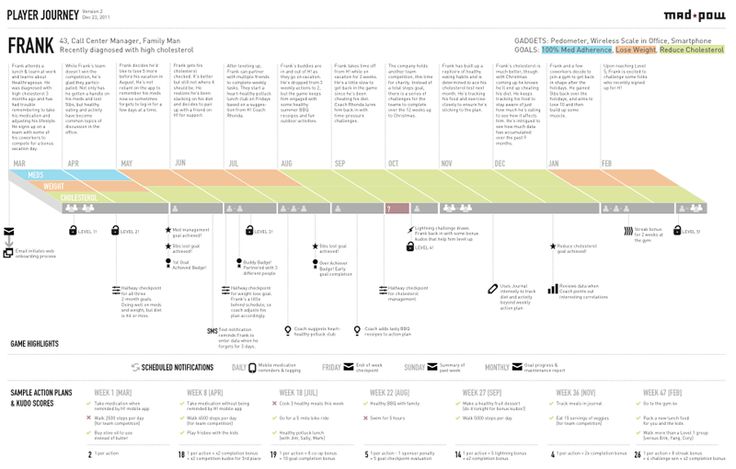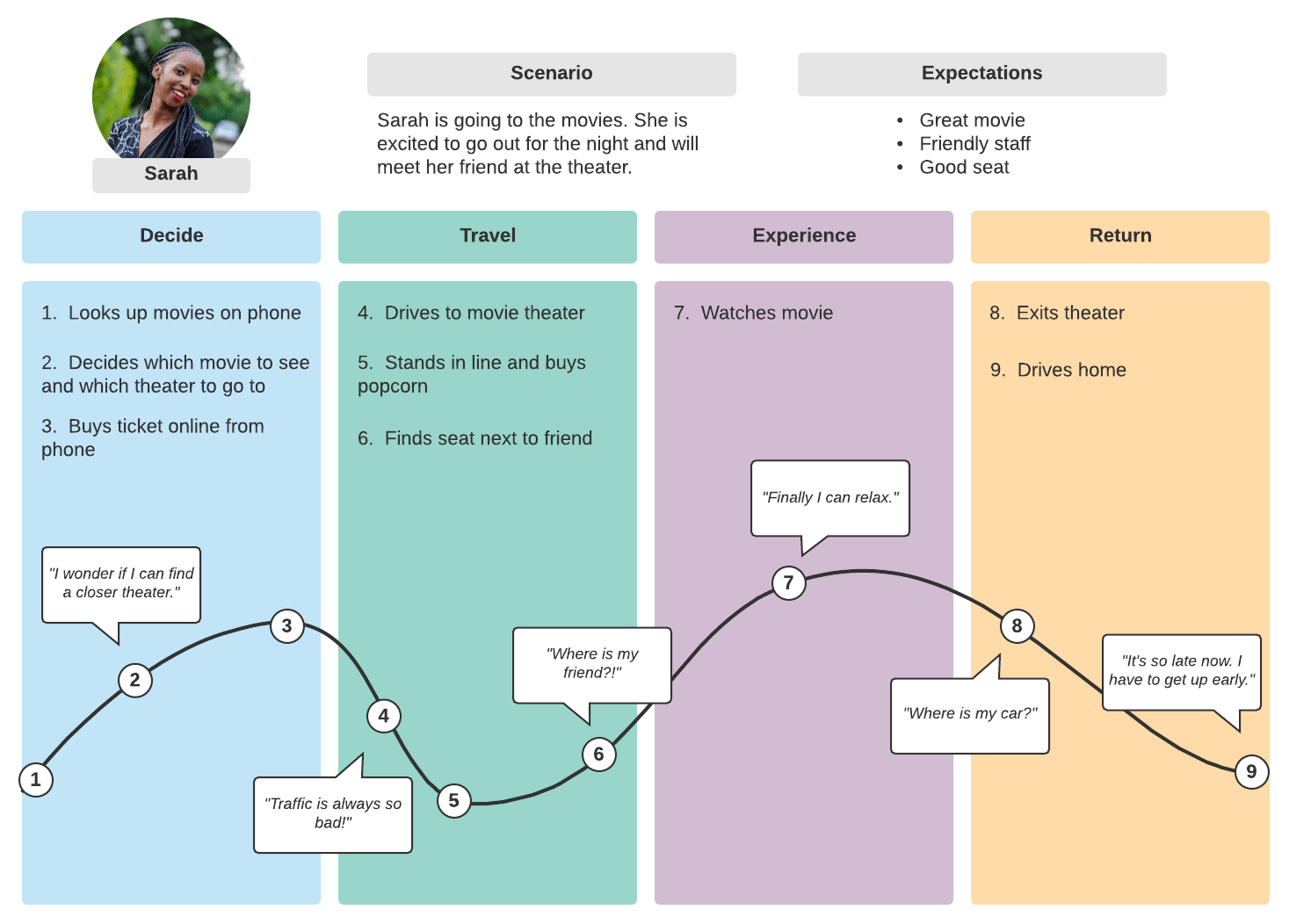In the crowded digital media marketing field, many companies are finding it hard to produce eye-catching content with high recall levels. But there’s a really simple solution to this dilemma: just walk a mile in the customer’s shoes!
The good news: there’s a handy marketing tool – known as Customer Journey Mapping – that lets companies explore the paths followed by their leads, prospects and buyers.
The bad news: surveys show that less than 10% of buyers are fully satisfied with their user experiences.
The very good news: satisfied customer ratings can be boosted quickly and at relatively low cost through mapping customer journeys and pinpointing pain points, tagged for instant remedial action.
What Is Customer Journey Mapping?
Based on the concept that all commercial interactions are ongoing processes leading to specific goals, rather than just once-off events, Customer Journey Mapping makes intangible experiences visible. Ensuring a clearer understanding of user needs among marketers and other team members, CJM provides data-based guidance on what kind of content should be produced, and why, together with where and when it should be placed in order to achieve the desired outcomes.
Defining pleasure and pain points from the consumer standpoint, CJM also spotlights hurdles and bottlenecks that might not be apparent from the company side. Sometimes even minor tweaks can shorten a buyer’s journey towards clicking that all-important BUY button.
Advantages of Customer Journey Mapping
Portraying each step in the journey followed by users with a brand, service or product, Customer Journey Maps can follow digital, physical and social steps, with value created or exchanged at each interaction. Overall user experiences are shaped by peak pain/pleasure points during the process, followed by their final outcomes.
Even on the more impersonal B2B market, procurement is handled by individuals. And people are swayed by social values and identity-affirming emotions. Other factors – quality, prices, payment terms, and delivery dates – are obviously crucial, as rational judgements must steer major decisions.
But when it comes to the crunch, with hair-fine differences between competing quotes for goods or services, apparently irrelevant factors (like a more intuitive interface or faster page loading) may tip the scales in favor of the smoother user journey. This is where a customer journey map can lead companies to a treasure trove of higher sales through multiple channels.

See how Transmyt can drive massive amounts of growth for your business.
-
SEO – Unlock massive amounts of traffic.
-
Content Marketing – Our team creates engaging content that will get shared + attract customers.
-
Paid Media – Effective paid strategies with clear ROI.
-
Website Development – Cutting edge technology platforms.
Why bother with Customer Journey Mapping?
Far more than just a marketing gimmick that produces a pretty chart to hang on the wall, mapping the journeys of each of its customers is a core aspect that warrants close attention from any business. And yes, each type of user needs a customized journey map, with its own specific target. Each map must focus on a single narrative, reflecting a viewpoint that represents a specific type of user.
On today’s review-driven markets, customer-centric business management techniques are proving their worth. Underpinned by user experience (UX) strategies targeting specific outcomes, this apparently simple step adopts a two-pronged approach towards building up long-lasting customer relationships:
- laying out the entire customer experience in terms of motives, actions, results, and experiences; and
- linking related corporate activities and roles to the departments implementing them.
The key factor here is to include the business side in each Customer Journey Map, making sure that interactions with leads, prospects and buyers are nurtured at every step along the way. Slotting goals, metrics and KPIs into each map offers priceless insights on how to turn each customer journey into an unforgettable user experience that adds value to your business.
Remember: merely upgrading specific user touchpoints is not enough.
Customer Journey Mapping sounds complicated…
Not at all! In fact, to be absolutely honest, user journey maps are more like linear diagrams, visualizations of processes that lead from Point A (often a landing page) to Point B (usually a CTA). Here are the basic steps:
- Review (and possibly update) corporate goals, establishing specific areas for mapping (sales funnels, handling complaints and returns, etc.);
- Then switch sides and set CJM targets by standing in the user’s shoes (intuitive page layouts, easy access to detailed information, delivery times, payment options, FAQ, chatrooms, etc.)
- Recount the user’s story through slotting actions into a timeline, together with feelings and thoughts, with input from a good mix of people, drawn from different areas and levels of the company;
- Chart all customer pain and pleasure points (this will probably take at least half a day), highlighting hurdles and pitfalls needing attention;
- Link problems to the relevant departments, breaking down silos and mobilizing all possible resources in search of solutions.
Like all good stories, each customer journey map has a persona (the customer) in a scenario (website, store, factory etc.), with expectations (get information, book services, purchase goods, etc.). By mapping out every stage in this journey, together with the related actions, reactions and emotions, companies learn how to optimize user experiences through insights drawn from each map.
Customer Journey Mapping for Novices
Simplifying this entire process, free CJM templates can be downloaded and adapted to individual company processes. Some are just tables that fit on a single page, like this:
Here’s a link to an indepth article entitled Customer Journey Mapping 101
Despite their simplicity, these templates are designed by a world leader in research-based user experiences: the Nielsen Norman Group.
Diving deeper into CJM
While paving the way for better customer experiences and more positive brand recognition, journey maps are a great way of conveying consumer information concisely across the board, creating a shared vision that builds links between staff in their separate silos. For more detailed information on how to get the best out of Customer Journey Mapping, take advantage of the expert advice available here: https://medium.com/tag/customer-journey-mapping and https://uxmastery.com/how-to-create-a-customer-journey-map/.
The most effective way of understanding real-life customer journeys and their pain points, CJM is also a great option for stress-testing new goods and services. Its output also underpins tactical initiatives and strategic recommendations. Based on solid user research, it’s very clear that every company benefits from Customer Journey Mapping at multiple levels.
Want more insights?
Subscribe to our weekly marketing tips and advice, delivered straight to your inbox.
Oops! We could not locate your form.
Keep Reading
Want more? Here are some other blog posts you might be interested in.
The MVP—Minimum Viable Product—has become gospel in startup circles. Build fast, test fast, fail fast. But in today’s crowded market, viability ...
The startup myth goes like this: work 20-hour days, pivot constantly, chase the high of the new. That’s what makes a ...
Most founders build their first leadership teams for speed, comfort, and alignment. Understandably, you’re strapped for time and need people who ...
For founders and growing companies
Get all the tips, stories and resources you didn’t know you needed – straight to your email!
